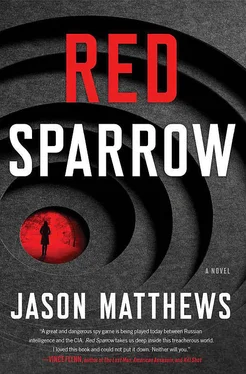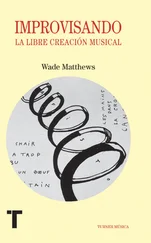“Total coverage, they’ll make so much noise that Golov will call a dozen aborts in a dozen tries. He won’t be able to meet SWAN. The Center will start getting nervous. Golov will start sweating. They’ll be frantic about losing contact with their agent. And we can only guess at the effect it will have on SWAN.”
“All right, so now you’ve made him nervous. He’s still too good to make a mistake on the street,” said Benford, “and he’ll have CS covering him too.”
“That’s okay,” said Nate. “One dark and stormy night we let him go surveillance-free. He’ll see he’s black, his countersurveillance will confirm it, and he makes the decision to make the meeting. And we have the Orions and TrapDoor up and running ahead of him. That’s when we maybe get a glimpse of a nervous SWAN pacing on a street corner, or pick up the license plates of an out-of-place car parked wrong. And we keep trying till we hit.”
Benford nodded approval. The kid had been on the other end, staring into the FSB barrel on the mean streets of Moskva. Benford knew what an agent’s vulnerabilities were, what scared his handler. Nate was coming along, he noted with satisfaction.
=====
Benford owned the Orions, kept them off people’s screens, didn’t loan them out. Who would want them, the geriatric surveillance team of retired field officers? Clunky cars, black socks and sandals, bird-watcher’s binoculars. The size of the team was fluid, grew or shrank depending on personal schedules, grandchildren’s visits, or doctors’ appointments. It was the very nature of the Orions—slow, patient, thoughtful—that made them so effective. It was impossible to goad them with provocative countermaneuvers. They watched, waited, faded in and out. They caressed their targets, they sniffed delicately, they flooded and ebbed like the tide. But they never stopped coming at you.
And they used TrapDoor. Only a certain kind of surveillance team could make TrapDoor work, a different kind of coverage, a philosophy, the difference between a dog chasing a car and a cat watching a bird. They had worked on it for some time. The Orions had perfected it, grease pencil on laminated maps, the overall compass vector telegraphed by a rabbit who is, after all, nothing but human. Never mind the twists and turns, the reverses and funnels, tell me where he’s going, where he’s headed .
They had brought federal surveillance experts in to observe the Orions, wanted to train other teams to get the same results, wanted to put a label on their black magic. Predictive coverage based on profile analysis, they wrote. Situational projections supporting discreet surveillance, they wrote. Anticipatory deployments determined by “route of march” balanced by mitigation of acceptable risk, they wrote.
Pretty much all nonsense, the Orions said. It was about developing a feeling, making a guess, taking a chance. The feds blinked at them. Think of it this way, said the sixty-eight-year-old team member who early in his career had tapped the GRU telephone exchange from the Berlin Tunnel. We’re an amoeba. You know, protoplasm, flexible, soft, stretching out ahead on either side, flowing along the edges. The experts smiled politely. How the hell do you put that in a field manual?
During street demonstrations, the experts looked for the Orions in the usual surveillance-team positions. They had disappeared. This isn’t coverage, the target has been left unobserved, where is the team? But when the rabbit arrived at the site, the Orions were waiting, parked in the neighborhood, in the park, at the crossroads, waiting so quietly that they didn’t see them. Crackpot ideas, alchemy, said the feds, thanks very much. They left the Orions to Benford.
So they began looking at Golov, and the assessment began. Quite a distinguished gentleman, still a proto-commie, smooth and unruffled. Get to know him, said Benford, and mind the CS team covering him. Stay loose, observe, stay invisible.
“All right,” Benford said, “it’s time to put Mr. Golov out of work for a while.” The next morning the FBI Gs were outside the embassy of the Russian Federation on Wisconsin Avenue, slumped in their Crown Vics, wearing Oakleys, with Bring it in their faces and two hundred fifty horses under their hoods.
=====
Closed sessions of the SSCI to discuss “intelligence matters” were held in Room 216 of the Hart Senate Office Building on Constitution Avenue. Designated HS, for “Hart Senate,” in congressional directories, the building was a nine-story black-glass-and-marble tower, not at all like the more elegant neoclassical Dirksen and Russell Senate Office Buildings. Arriving alone, Benford crossed the soaring atrium lobby and took the stairs to the second floor. At Room 216, he entered the outer office, registered with the guard behind the counter, and surrendered his mobile phone. He stepped through the open gray steel vault door into the committee room. He was early for the session and the room was empty except for aides distributing folders at each position on the raised oak dais. Of course the dais was raised, thought Benford. Senators enjoyed looking down at witnesses.
Invisible behind the marble- and wood-paneled walls, ceiling, and floor of the committee room was a hatchwork grid of copper filaments continuously pulsing energy that ensured that, once the latches dogged the vault door tight against the copper finger stock around the frame, no signals could penetrate into or escape out of the room.
In the 1980s, in an attempt to eavesdrop on sensitive SSCI testimony, the Russians had mounted an operation to leave behind recording equipment in the room that could be retrieved later, a simple technique to negate the electronic chastity belt. The audacious plan had been foiled by a janitor who found the device (which had been glued beneath a chair in the audience gallery during an infrequent open session of the committee) and turned it in to the Capitol Police, who promptly passed it to the FBI. Rather than replacing it and feeding the Soviets disinformation for years, thought Benford, looking around the august chamber, the FBI had exulted in a “foreign find”—a listening device planted by the opposition—and ground the recorder to pieces under its heel, an opportunity squandered.
Benford was the only person seated at the witness table. An aide placed a small card with his name in front of him. At the members’ insistence, Benford held a counterintelligence briefing every three months for the SSCI, a session that only the fifteen members of the committee were permitted to attend. Senators long accustomed to staff aides hovering nearby grudgingly complied with the requirement that no staffers be permitted in the room, which meant that few if any notes would be taken.
Members rarely missed Benford’s quarterly CI brief, generally reckoned to be the most concise and informative presentation available from anywhere inside the Intelligence Community. But for a single member of the committee, the SSCI treated him with respect. Only Senator Stephanie Boucher from California seemed to harbor intense dislike for IC witnesses, specifically those from the CIA. As the members trickled into the room and sat down, Boucher looked down at Benford with a scowl. Benford ignored her and made a note in the margin of his briefing outline. The committee members were seated, the staff aides filed out, the vault door was swung shut. As it closed, a small green light came on over the door. The chairman simply said, “Mr. Benford,” to indicate that he should begin.
Benford quickly highlighted developments in a Chinese cyber case on the West Coast, but referred members to COD, the Computer Ops Division in the CIA, nicknamed the “codpieces,” for a more detailed briefing on the nature of the threat. Benford moved to a sensitive case wherein the CIA and FBI had detected officers of the DGSE, the French External Intelligence Service, servicing a dead-drop site in upstate New York. A joint briefing with the FBI’s French Regional Ops Group, nicknamed “FROG,” on French activities inside the continental United States was being prepared. Benford turned the page of his briefing book.
Читать дальше












